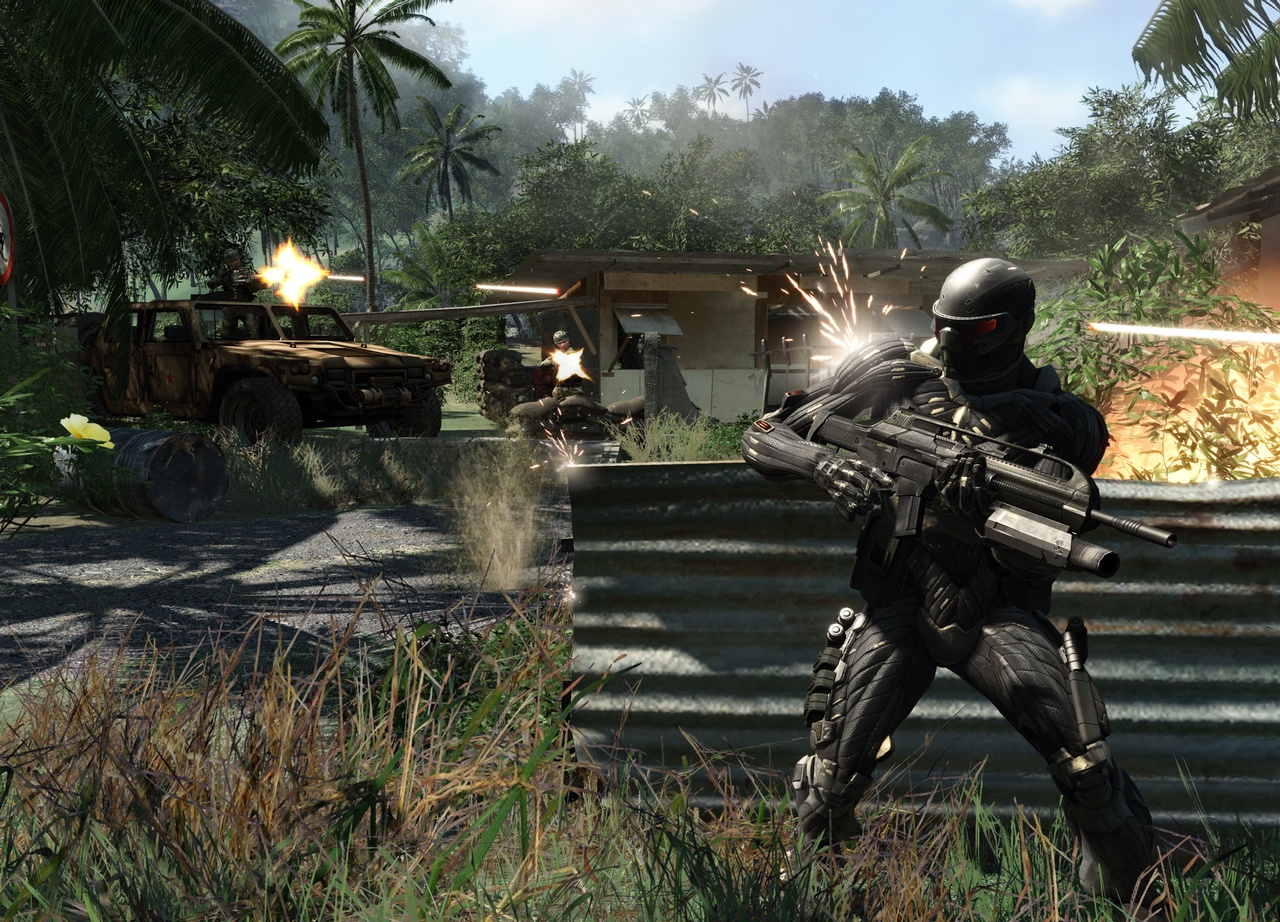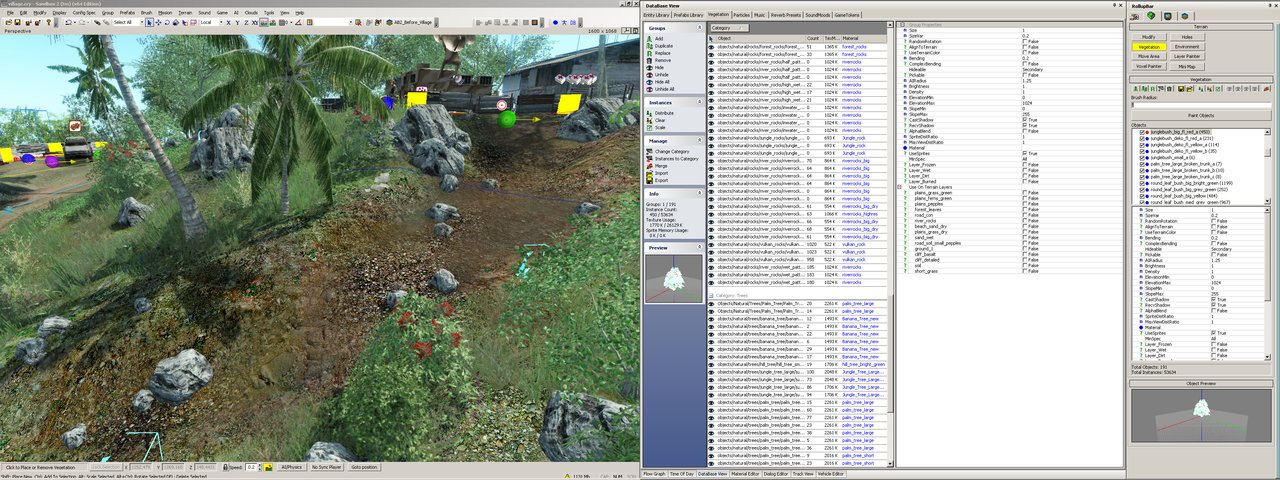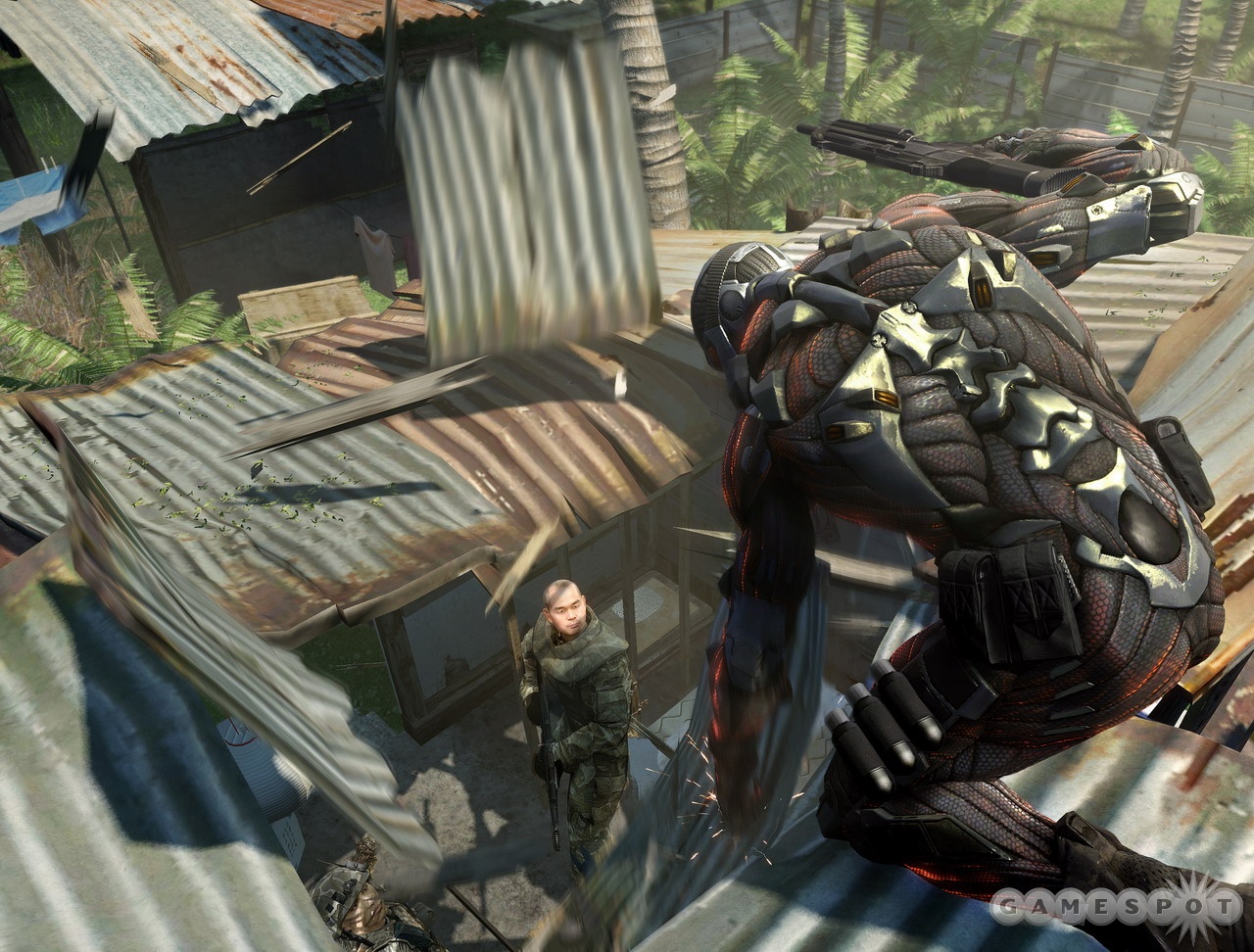Crysis Designer Diary #1 - Breaking New Ground (and Trees) with CryEngine 2
Crytek's Harald Seeley talks about the many cool new technologies that will power Crysis and other games based on the new CryEngine 2 game engine.
Crysis is one of the most anticipated PC games of 2007 thanks to its state-of-the-art visuals as well as the track record of its developer, Germany's Crytek, the maker of 2004's excellent Far Cry. Now, three years after Far Cry, the company is preparing to deliver Crysis, a first-person shooter that will put you in the shoes of a Special Forces soldier battling an alien invasion on a remote Pacific island. The game's incredible graphics are powered by CryEngine 2, the company's proprietary game engine. Earlier this month, Crytek was at the Game Developers Conference in San Francisco to show off the engine and its tools to other developers. You can watch the HD version of Crytek's GDC video here and then read on to get the thoughts of Crytek's Harald Seeley. Crysis will ship sometime later this year.
Introducing CryEngine 2
By Harald SeeleyDevelopment Director and Licensing Manager, Crytek
We at Crytek always want to think about what's next and how we can continue to improve. We were extremely proud of what we accomplished with Far Cry and the original CryEngine, but as a group we knew we could do much, much more, especially in certain areas of engine technology and game design. CryEngine 2 will push the envelope of those technical features in games, and below are some examples of what we looked at tackling.

In CryEngine 2-based games, the lighting and shadows are created in real time, because the time of day and general lighting conditions can both change while you're playing the game. Therefore, we can't just paint the shadows into the textures ahead of time, nor use precalculated light or shadow maps. That also means we have to account for the fact that the intensity and direction of the ambient fill light (the light from the open sky, for example) could change dynamically. Achieving this has never been done before in a real-time video game engine, to my knowledge.
Since the original game design included both rifle scopes and binoculars, we couldn't take the easy way out when creating the backdrops for long view distances. We had to come up with a way to display those extremely large and open environments in real time, and at decent frame rates, since we would never know when the player would decide to use a scope and zoom in on something. It was only one of many difficult challenges we created for ourselves with our game design, but in the end I think we are very pleased with the outcome.
The character animation system has been in development for about two-and-a-half years, and the facial animation system for about one. But the greatest amount of progress has come in the last few months, when all the work finally started to come together. The goal was to achieve natural-looking animations that crossed the barrier of the "uncanny valley," a term that describes people's reaction to things that are too lifelike to feel stylized, but not real enough to be believable. In our case, had we not put sufficient effort into improving our animation system, our highly detailed character models might have looked stiff and robotic, since you would expect such a lifelike model to have lifelike movements. I think the video sequences show that the time and effort that the team invested in this was ultimately very well spent.
Cinematic effects such as motion blur and depth of field can dramatically enhance the sense of immersion and suspension of disbelief that a player experiences in the game environment, but there is a fine line between immersing players and overwhelming them. We believe the trick is to use the effects lightly and sparingly so that you barely notice them, rather than making them so obvious it feels gimmicky and overdone or hinders gameplay.

When we first started to create the original proof of concept level for our engine, our designers asked for a destructible bridge that did not consist of the usual collection of prebroken pieces that always came apart the same way, but something that broke procedurally using physical modeling. When we eventually saw the pillars of the bridge collapse dynamically with C4 charge explosions, I knew we had something special and innocently asked, "What about the trees?" After a moment of stunned silence, where everyone was collectively thinking about just how many trees there were in our levels, the consensus was that we had to try. Then, when we saw how much the public enjoyed mowing down the trees during the game's public unveiling at E3 last year, we knew we couldn't stop there and had to try to make as much in the game as possible destructible in some fashion.
What you see is what you play. It sounds simple, but the ability to rapidly prototype and test out gameplay ideas, and continuously refine them, is the key to making a great product. The more easily you can try out a new idea, the more likely you are to invest the time to do it. The more often you can iterate on an idea and polish it, the better it becomes. With the high cost of development today, tools that don't allow designers to quickly update their levels and try out alternative approaches will limit the amount of quality, polish, and variety they can achieve in the time available, which is why this feature was absolutely critical for us.
Obviously, the better the hardware and newer the operating system and device driver models you have, the higher the frame rates you can expect and the more features you can enable. But our engineers have a long history of getting the most possible out of any hardware configuration, going all the way back to the first CryEngine used in Far Cry and the many subsequent updates that were released. The last step of any engine development is achieving scalability and optimizing both memory usage and performance. We are now focusing the majority of our efforts onto this task. We think players will be quite pleased by the final outcome.

Of course, there are many other features in CryEngine 2 that we are proud of, and we're looking forward not only to seeing how everyone reacts to Crysis, but to other games that will be built with our engine. I know that in some ways we have only begun to scratch the surface of what is possible with our engine. I'm really looking forward to working with other developers to explore and expand the boundaries of what we've previously thought was achievable in a video game.
We want to help anyone out there who wants to work to push the limits of what the industry can do, anyone who wants their game to really stand out in the marketplace now and in the foreseeable future. We believe we have a very unique and special product, one that can help developers ensure their game not only excels visually but allows them the possibility to create compellingly new and unique game experiences that don't feel to their audience like a repeat of any game they've played before. Crysis will be the first of what we hope are many games built on CryEngine 2 technology to do just that, and we're looking forward to sharing with you over these next months the processes our team is going through to create a new, exciting first-person shooting experience.
Got a news tip or want to contact us directly? Email news@gamespot.com
Join the conversation